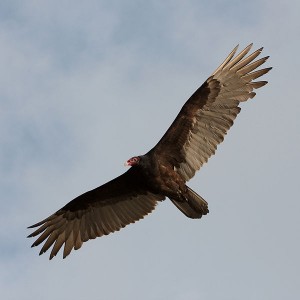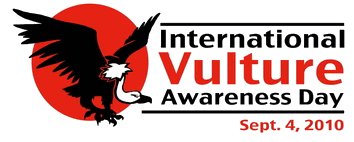This is the second International Vulture Awareness Day. Although most people are unaware of it, Canada does have a resident vulture species, highly deserving of a feature on this blog.
Turkey vultures Cathartes aura have been expanding their range northward in the last few years, and can now be seen across the southern prairies, as well as parts of BC and Ontario. Their numbers are increasing in Alberta and Saskatchewan, likely because of the exploding white-tailed deer population. Their huge natural range extends from central Canada down to the tip of South America.
 These massive birds can be found soaring over open country, pastures, grasslands, and wetlands. Their range northward in Canada will likely be restricted to areas south of the heavily treed boreal forest.
These massive birds can be found soaring over open country, pastures, grasslands, and wetlands. Their range northward in Canada will likely be restricted to areas south of the heavily treed boreal forest.
At first glance, these vultures may be misidentified as a very large bird of prey. Closer inspection, however, will reveal a purplish-red, featherless head and neck. Dark brown to black plumage and a short, hooked, ivory coloured beak complete the identification. Covering large areas, these graceful birds seldom flap their wings, but float across the sky on thermal air currents.
With a wingspan up to six feet, a height of 3 feet and a weight up to 5 pounds, turkey vultures are impressive birds. They are certainly not cute little songbirds, but act as a natural cleaning service, consuming carrion from road kills and animals that have died a natural death. Our guide in Florida referred to animals killed on the highway as TV dinners, which certainly put their worth into perspective.
Turkey vultures use their keen vision and excellent sense of smell to locate food, flying low enough to detect the gasses produced by decaying animals. The part of their brain responsible for processing smells is particularly large, compared to other birds. This heightened ability to detect odours allows them to find dead animals from a vast distance.
Vultures are among the most sadly misunderstood birds in the world. In a society based on acceptance by appearance, vultures are labeled ugly birds, and receive no recognition for their vital role in the ecosystem.
While the turkey vulture population is thought to number 4,500,000 individuals, other vulture species in the world are not so lucky. Populations of some Old World Vultures in India, Nepal and Pakistan have declined up to a horrifying 99% over the past few years, and many are now critically endangered.
Sighting one of these birds floating over the Canadian prairies is a wonderful experience. Salute them for their work on our behalf when you see one!
International Vulture Awareness Day 2010
The International Vulture Awareness Day has grown from Vulture Awareness Days run by the Birds of Prey Working Group in South Africa and the Hawk Conservancy Trust in England, who decided to work together and expand the initiative into an international event.
It is now recognized that a coordinated international day will publicize the conservation of vultures to a wider audience and highlight the important work being carried out by the world’s vulture conservationists.
This article is a reprint from this blog on September 5, 2009




Spotted a turkey Vulture in Summerland BC Today. Did not have a camera with me. Very surprised to see this beautiful bird in our area. Did not know that they were this far north. See them all over the Baja.
An aquaintance on Facebook (Ivan Fraser) living along Route 333, St.Margaret’s Bay, NS posted today (with pictures) about seeing Turkey Vultures feeding on road kill outside his home.
I can’t right click to post any links or the pics, but if you are interested you can find him on Facebook I’m sure. He has authored a book and is happy to share Peggy’s Cove and area stories.